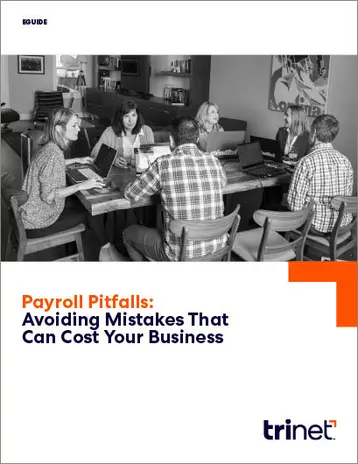
Curious what some of the deductions are on your paycheck? Even your first paycheck at a new job might show deductions from the get-go, which may create questions. We’ve compiled a few of the more common deductions and how to resolve them if you’re part of an HR department.
What are catch-up deductions and when are they used?
If an employee’s deductions don’t match the amount owed on their account, catch-up deductions can be used to resolve the difference. Catch-up deductions are needed when the correct deductions aren’t pushed, which causes a discrepancy between what’s owed and what’s been paid.
Reasons for Discrepancies
Discrepancies can be caused by multiple reasons, including having the wrong number of dependents listed, a pay period being skipped, or the wrong effective date being entered. For example, if an employee has 30 days to enroll in insurance and they don’t enroll until after the effective date, they may have a catch-up deduction.
The Process
The payroll administrator chooses the catch-up amount that’s applied to an employee’s deductions and the period of time over which the catch-up deductions will be applied. If you spread the catch-up amount over multiple pay periods, you risk not being paid back if an under-deducted employee leaves the company. For example, an employee has the wrong of number of dependents listed and has to pay catch-up contributions. The administrator decides to spread them out over a 3 month period. If during the second month the employee quits, the company will lose the funds that the employee would’ve paid back through deductions in the third month.
Other Tips for Deductions
It’s true that spreading out catch-up deductions over time puts a company at risk of losing funds, but it can also be hard on an employee if you collect the deductions all at once. When deciding how to collect deductions, you should take into consideration how long an employee has been at the company, and the total deduction value.
How Can I Immediately Resolve Under and Over-Deductions in Payroll?
Adjustment plans to resolve under and over-deductions in payroll could span several pay periods. Therefore, handling these adjustments directly in payroll is the fastest way to make these corrections.
Manually adjusting payroll to correct under-deductions
When an under-deduction is detected, we suggest an adjustment plan that increases the individual deductions at a rate of 2x their typical deduction.
Manually reimbursing employees for over-deductions
When an over-deduction is detected, we automatically suggest an adjustment plan that decreases their deductions at a rate of 2x their typical deduction. However, the best way to handle over-deductions is to reimburse the individual immediately for their overpayment. This can be done manually in your payroll account.
You will also need to contact your payroll provider to process reimbursements. Reimbursements for pre-tax deductions are more than simply paying back the overpaid amount in their next paycheck. You will need to correct the previous payroll information to account for the increase in taxable wages and taxes — your payroll provider can assist you with this.
Why Does My New Employee’s Paycheck Have Deductions Already?
After the effective date for your employee’s benefits, your payroll provider may push your employee’s deductions amounts to payroll by check date — not pay period — for the months that they have coverage. Even if you have a new employee and they’ve only worked 2 days before their first check, they’ll see part of their monthly deductions in their first paycheck after their benefits begin.
For example, assume the following:
- A new hire starts work on September 25.
- They enroll in Medical Insurance for an effective date of October 1 and a monthly deduction of $100.
- This employee is paid on a semi-monthly basis (2 pay dates: 15th and end of month).
The employee’s first pay period is Sept 25 through October 8. They’ll receive their first paycheck on October 15. Since this date is after their effective date for Medical, their first paycheck will include half of their monthly Medical deductions ($50) for October coverage, and the second half in their second paycheck for October.






